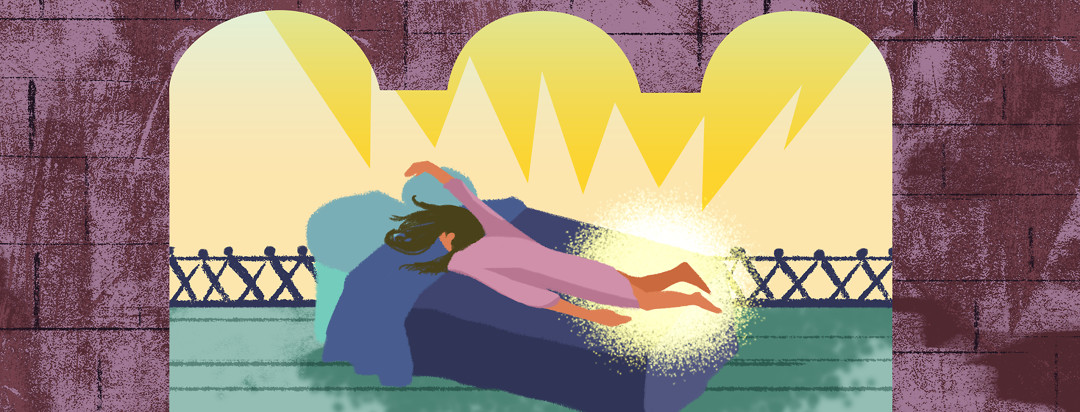What is the Most Common Symptom of Peripheral Artery Disease?
When a person has peripheral artery disease (PAD), it means their limbs are not getting enough blood flow. This results from their blood vessels having plaque built up inside them that prevents blood from flowing normally. PAD is also called atherosclerosis or peripheral vascular disease. Sometimes it is referred to as the hardening of the arteries. The plaques that build up in the blood vessels of the arms and legs are the same kinds of plaques that can cause heart attacks or stroke. However, these limb-specific plaques lead to PAD and issues with the arms and legs instead.
What are the plaques made of?
The plaques in PAD are made up of cholesterol, fat, inflammation, protein, calcium and other substances that grow along the walls. Eventually, these plaques can get so large, they prevent enough blood from getting through to supply our entire legs or arms. When there’s not enough blood flow to a certain part of the body, it can be at a higher risk of infection, poor wound healing, or tissue death.1-3
Limb claudication
The most common symptom of PAD is pain in the arms or legs that gets worse with activity but improves with rest. Someone with PAD might be out running errands all day and have pain in one or both of their calf muscles that gets worse the longer they are on their feet. When they sit down and rest later, the pain gets better. This symptom is called limb claudication.
The classic experience with limb claudication is pain, aching, tiredness, tightness, cramping, or burning in the arms or legs. Although both the arms and legs can be affected by PAD and claudication, it is much more common for the legs to be involved.
After several minutes of standing still, not moving, or resting, the pain generally goes away. However, the pain comes back in a predictable pattern. For example, if someone starts having lower leg pain when they are halfway to their mailbox, the pain will most likely improve if they sit down and rest after. However, the next time they try to walk to their mailbox, they might start experiencing the same pain again, at the same halfway point. Regardless of where they are going, the distance needed to travel for the pain to come back will be relatively constant, no matter how much rest has been taken in between.1-3
Atypical leg pain
There are other forms of limb pain that can be related to PAD. Atypical leg pain is a common symptom of PAD and is similar to limb claudication, however, it’s not as predictable. For example, one day, a person might start having pain when they’re halfway to their mailbox, but the next day, they might start having pain before they are halfway. It may also take different amounts of rest for the pain to improve. Some people may have atypical leg pain before they notice predictable claudication.1-2
Where is the pain or discomfort felt?
The site of pain or discomfort depends on what blood vessels have plaque in them and where blood flow is affected. Plaques in arteries that are closer to the center of the body, like the aorta or the iliac arteries (in the center of the abdomen and pelvis), may cause pain in the hips, thighs, or buttocks. Plaques in the popliteal artery behind the knee may cause pain in the lower portion of the limb, like the calf muscles or feet.1
Why does this happen?
Limb claudication and atypical limb pain are both caused by the same underlying issue, a lack of normal blood flow to the entire limb. In either case, when a person is walking or exercising, their muscles need more oxygen and nutrients. Normally, our blood vessels expand to allow more blood through. This blood can deliver extra amounts of oxygen to keep our muscles fueled. A person with PAD has issues with their arteries that decreases the amount of blood that can flow. If the arteries are hardened and partially (or completely) blocked, blood can’t get through to adequately supply the muscles. This is why pain occurs with exercise when the muscles need more blood and oxygen, but improves with rest.1
Other possible symptoms of PAD
While limb claudication and atypical leg pain may be the most common symptoms experienced in PAD, there are other symptoms that may arise as well. These mainly have to do with changes in blood flow and potential blockages. Some people may experience no symptoms at all, however, other potential symptoms of PAD include the following:1-3
- Sores or wounds on the feet or toes that aren’t healing well
- Pain, burning or aching in the toes and feet at night or when lying down
- Color changes (especially redness or darkening) of the limbs
- Skin that is cooler to the touch on the feet or lower legs
- An increase in the number of infections
- Shiny skin or skin that becomes hairless on your lower legs
If you notice limb claudication, atypical leg pain, or any of the symptoms listed above, consult a doctor as soon as possible.

Join the conversation